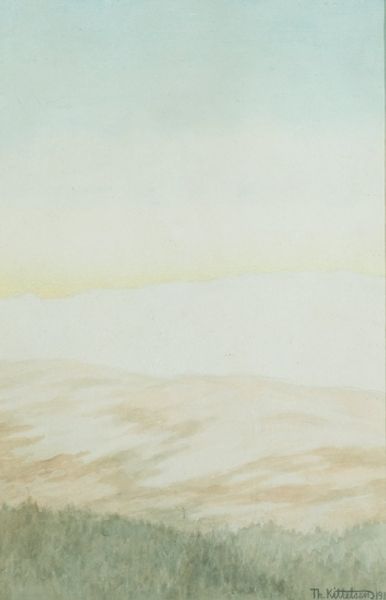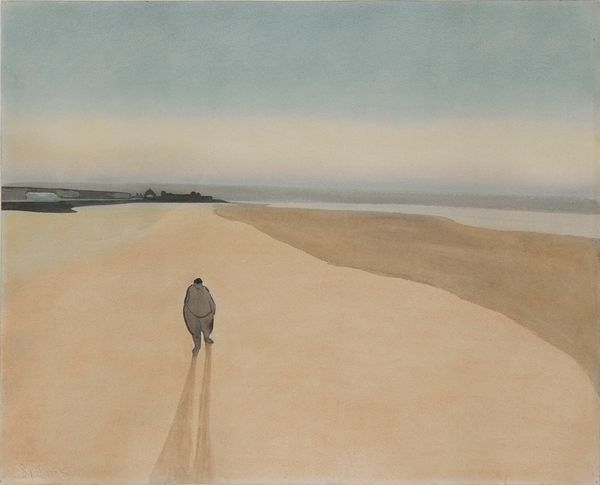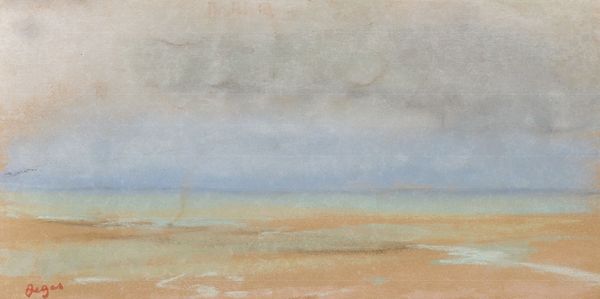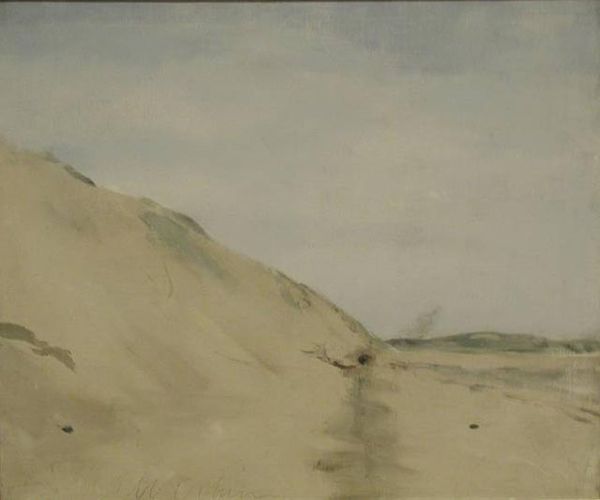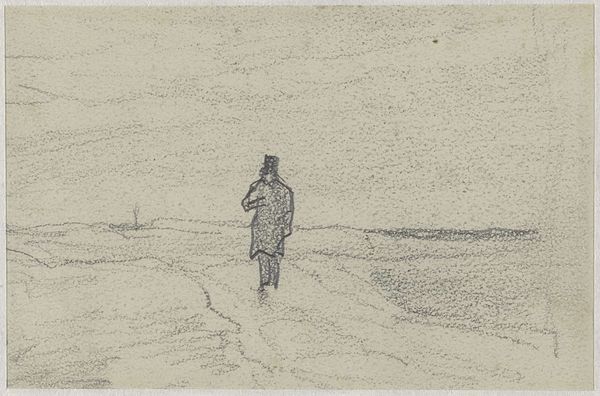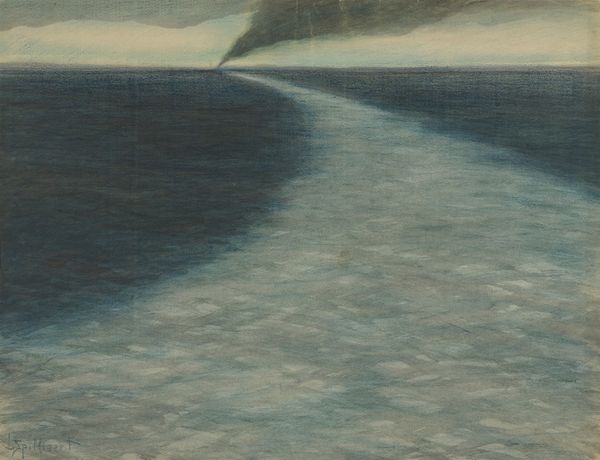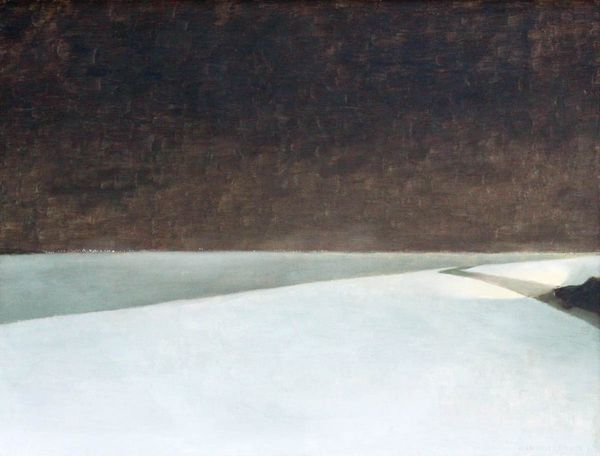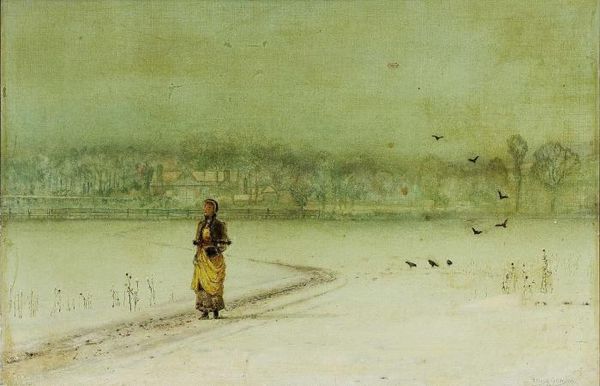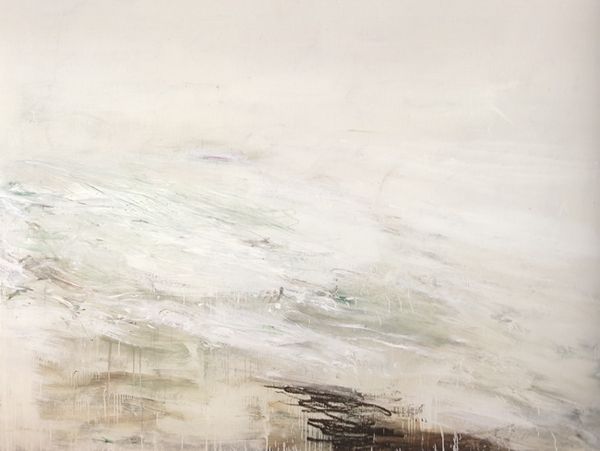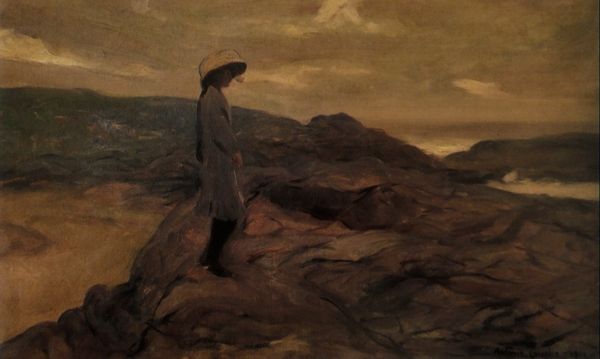
painting, oil-paint
#
painting
#
oil-paint
#
landscape
#
oil painting
#
romanticism
#
realism
Copyright: Public domain
Curator: Take a moment to consider this oil painting, "Snow and Mist", attributed to John Atkinson Grimshaw. The scene is muted, almost monochromatic. What's your first impression? Editor: Isolation. The lone figure trudging through the snow under that oppressive sky... it speaks of journeys, hardship, maybe even a bit of melancholic resolve. It reminds me of Caspar David Friedrich's wanderer. Curator: It's true, the solitary figure certainly invokes the Romantic tradition and its fascination with the sublime. And given Grimshaw's interest in atmosphere, that encompassing mist becomes symbolic – perhaps a metaphor for the ambiguities of life or the challenges one must face. But the scale isn’t heroic like Friedrich, more domestic, almost personal. Editor: Right, the figure's dress looks less like that of a heroic wanderer, and more like everyday garb – hinting perhaps at a more localized struggle or personal quest rather than something epic. It certainly isn't about imperial themes as we sometimes find in snowy landscapes commissioned for public works. I wonder, did Grimshaw paint this as part of a larger commentary on societal burdens? Curator: While his paintings are typically associated with nocturnal cityscapes, a scene like this hints at something more profound. Light in his cityscapes evokes feelings of nostalgia for a time, and perhaps we see a similar yearning depicted in nature here. He had his own family burdens to carry so this might be his personal vision of pilgrimage. Notice how the lack of colour concentrates the eye on the texture of the snow and the implied motion of the figure. Editor: Yes, that focus draws you in. The monochromatic palette lends the work a dreamlike quality, almost blurring the lines between reality and memory. But I am still troubled by how public or private he envisioned the scene. Did he mean this to become the treasure in the walls of a museum or was it for private solace? Curator: Those boundaries between public and private become ever more porous with each passing century. Perhaps the painting now serves a purpose far removed from Grimshaw's initial intention. The viewer, in any era, projects their own emotional landscape onto the scene. The artwork's enduring power rests in its capacity to evoke personal connection. Editor: I think you’re right. Regardless of its original setting, Grimshaw created a space for us to reflect on our own solitary journeys. It makes me want to wrap up in a warm blanket and stare out a window during a snowstorm. Curator: And to me, it acts as a small reminder that we all trek a solitary path, even within the perceived hustle of a public space like this very gallery.
Comments
No comments
Be the first to comment and join the conversation on the ultimate creative platform.
